Mupirocin
Synonym(s):5,9-Anhydro-2,3,4,8-tetradeoxy-8-[[3-(2-hydroxy-1-methylpropyl)oxiranyl]methyl]-3-methyl-[2E,8[2S,3S(1S,2S)]]-L -talonon-2-enonic acid 8-carboxyoctyl ester;BRL 4910A;Calcium mupirocin dihydrate;Pseudomonic acid
- CAS NO.:12650-69-0
- Empirical Formula: C26H44O9
- Molecular Weight: 500.62
- MDL number: MFCD03792664
- EINECS: 603-145-3
- SAFETY DATA SHEET (SDS)
- Update Date: 2025-12-25 11:31:46

What is Mupirocin?
Absorption
Systemic or percutaneous absorption of mupirocin following dermal application is expected to be minimal in adults and children. Occlusive dressings do not significantly enhance drug absorption, but damaged skin may allow enhanced penetration of the drug across the skin barrier.
Toxicity
LD50 and Nonclinical Toxicity
The oral LD50 value in rats is 5000 mg/kg. Studies evaluating the carcinogenic potential of mupirocin have not been performed. In various in vivo animal and in vitro bacterial assays, there was no evidence of genotoxicity caused by mupirocin. In reproduction studies using male and female rats, there were no signs of impaired fertility upon subcutaneous administration of mupirocin.
Use in special populations
Mupirocin was found to be excreted in human milk. As there is limited data on the use of topical mupirocin in pregnant women, the use of this drug in these patients should be undertaken with caution. Based on the findings in clinical trials, topical mupirocin was shown to be safe and effective in pediatric patients aged 2 months to 16 years.
Description
Mupirocin (pseudomonic acid A) is a monoxycarbolic acid antibiotic produced by Pseudomonas fluorescens. It is useful in the treatment of dermal infections, especially those involving S. aureus and S. epidermidis. First marketed by GlaxoSmithKline under the trade name Bactroban, mupirocin is now also a generic topical drug prescribed for human and veterinary use. In low concentrations, mupirocin is a bacteriostat. At higher levels, it is a bactericide that is effective against Gram-positive bacteria, including MRSA.
Chemical properties
White Crystalline Solid
The Uses of Mupirocin
Mupirocin, is a major component of the pseudomonic acid, an antibiotic complex produced by Pseudomonas fluorescens NCIB 10586. Topical antibacterial. It is used as antibacterial, antimycoplasmal, isoleucyl-tRNA synthetase inhibitor. The spectrum of antibacterial activityof mupirocin is confined to Gram-positive and Gramnegativecocci, including staphylococci, streptococci,Neisseria spp., and M. catarrhalis.
Indications
Indicated for the treatment of impetigo and secondary skin infections, leading to traumatic skin lesions, due to Staphylococcus aureus and Streptococcus pyogenes.
Definition
ChEBI: An alpha,beta-unsaturated ester resulting from the formal condensation of the alcoholic hydroxy group of 9-hydroxynonanoic acid with the carboxy group of (2E)-4-[(2S)-tetrahydro-2 -pyran-2-yl]-3-methylbut-2-enoic acid in which the tetrahydropyranyl ring is substituted at positions 3 and 4 by hydroxy groups and at position 5 by a {(2S,3S)-3-[(2S,3S)-3-hydro ybutan-2-yl]oxiran-2-yl}methyl group. Originally isolated from the Gram-negative bacterium Pseudomonas fluorescens, it is used as a topical antibiotic for the treatment of Gram-positive bacterial infections.
Indications
Mupirocin (Bactroban, Centany) is a topical antibiotic produced by fermented
Pseudomonas fluorescens. It has a narrow spectrum of activity, mostly against
gram-positive aerobic bacteria (including Staphylococcus and methicillin-resistant
Staphylococcus) and many strains of Streptococcus. It is also active against some
gram-negative aerobic bacteria but is inactive against anaerobes, Chlamydia, and
fungi. It has proved equal in efficacy in the treatment of impetigo when compared
with oral erythromycin, with fewer adverse side effects.
Mupirocin does not interfere with wound healing. It is active only on topical
administration and is converted to an inert molecule on systemic administration.
Prolonged use of mupirocin increases the risk of evolution of resistant organisms.
Themechanism of action has not yet been fully classified, but it does differ from other
available antiinfective agents, and there is little chance of cross-resistance developing.
Also, unlike many other topical antibiotics, it rarely causes allergic sensitization.
Manufacturing Process
Production and recovery of Antibacterially active pseudomonic acid and
Pseudomonic acid A
Pseudomonas fluorescens, strain NCIB 10586 was grown in submerged culture
at 30°C in a medium containing 1% corn steep liquor and 0.5% glucose in a
basic salts solution. The maximum yield of the antibiotic occurred after 24
hours and all of the detectable activity was in the culture fluid. After the
addition of barium chloride (0.5%) the cells and precipitated non-active
contaminant material were removed by centrifugation. The activity was
progressively concentrated by partitioning into isobutylmethyl ketone (IBMK)
(0.2 vol) at pH 4.5 water (0.8 vol) at pH 8.5, and then IBMK (0.25 vol) at pH
4.5 followed by evaporation to a small volume under reduced pressure. After
a further partition into water at pH 8.5 and then adjustment to pH 7-8 the
aqueous solution was freeze dried to give the sodium salt which could be
stored at 0°C for several months, without loss of activity. The antibiotic
extract was stable within the range pH 4-9 at 37°C for 24 hours. Outside
these limits rapid loss of activity occurred. The sodium salt showed a broad antibacterial spectrum against Gram positive and Gram negative bacteria,
showed low toxicity and was bacteriostatic against S. aureus (N.C.T.C. 6571)
and E. coli (M.R.E. 600).
Further purification of the crude acid was effected by chromatography on
Amberlite XAD-2 polystyrene resin with a linear gradient produced by adding
0.1 N methanolic ammonia, to 0.01 N aqueous ammonia. A series of low
molecular weight acids was eluted first, followed by a fraction (30-60%
elution) that possessed the major part of the antibacterial (biological) activity
Purification of Pseudomonic acid and Pseudomonic Acid A
The produced biologically active material upon methylation with diazomethane
in ether showed two spots by thin layer chromatography corresponding to
methyl pseudomonate as the major component and a minor amount of
component methyl pseudomonate-A (ratio ca 9:1 by wt.).
Methyl pseudomonate was separated from methyl pseudomonate-A by
preparative layer silica gel (GF245) chromatography on development with
chloroform/isopropanol (9:1). 50% of methyl pseudomonate was recovered
from the impure residue by crystallization from benzene/petroleum ether to
give colorless needles of m.p. 76.5-78°C.
Acetylation of the methyl ester with pyridine/acetic anhydride affords a
triacetate. Reduction of the methyl ester with LiAlH4 in THF afforded 1,9-
dihydroxynonanoate, m.p. 46°C.
Antimicrobial activity
It is active against staphylococci and streptococci, but also Neisseria and Haemophilus spp. Enterococcus faecalis tends to be sensitive whereas E. faecium is usually resistant. Activity against Staph. aureus is affected by inoculum such that a 10-fold increase in the inoculum causes doubling of the minimum inhibitory concentration (MIC) in vitro. Activity also decreases as pH increases above the normal skin pH of 5.5.
Acquired resistance
Before the introduction of mupirocin, resistance in Staph. aureus was uncommon, with a natural mutation frequency of 1 in 109. However, shortly after the agent was introduced, mupirocin-resistant strains began to emerge. They are of two types: low level (MIC 8–256 mg/mL) and high level (MIC >256 mg/mL).
High-level resistance, in contrast, is linked to the acquisition of a transmissible resistance gene MupA that may co-transfer with other antimicrobial resistance genes. Strains that express MupA are not clinically susceptible to mupirocin.
Several studies suggest that widespread use of prophylactic mupirocin may result in increased levels of resistance. In Canada increasing use of mupirocin across the country led to high-level mupirocin resistance, rising from 1.6% to 7% over a 9-year period.
Pharmacokinetics
Mupirocin is reported to be active against susceptible aerobic gram-positive cocci, such as Staphylococcus aureus, Staphylococcus epidermidis, and other beta-hemolytic streptococciStreptococcus pyogenes. It mediates its antibacterial activity by inhibiting the bacterial protein synthesis and formation of bacterial proteins essential for survival. The minimum bactericidal concentration (MBC) against relevant pathogens is generally eight-fold to thirty-fold higher than the minimum inhibitory concentration (MIC). In one clinical study investigating the therapeutic effectiveness of topical mupirocin in impetigo, the therapeutic response rate was about 94 to 98% after one week following the end of therapy. In clinical studies of patients with primary and secondary skin infections, both elimination of the bacterial pathogen and clinical cure or improvement hav been demonstrated in over 90% of patients receiving topical mupirocin. Mupirocin resistance as high as 81% has been reported previously. Resistance to mupirocin, which occurs more frequently in methicillin-resistant than methicillin-susceptible staphylococci, may occur with the production of a modified isoleucyl-tRNA synthetase, or the acquisition of, by genetic transfer, a plasmid mediating a new isoleucyl-tRNA synthetase.
Clinical Use
Mupirocin is mainly used as a nasal cream as part of the regimen to decolonize patients who have been found to carry methicillin-resistant Staph. aureus. It can also be applied to tracheostomy, gastrostomy and other sites that are frequently colonized with MRSA.
The use of mupirocin as a means of controlling outbreaks of infection due to MRSA appears to be of only marginal benefit in an endemic situation.
A Cochrane Review of nine randomized controlled trials of use of mupirocin to prevent subsequent Staph. aureus infections in nasal carriers of the organism found a statistically significant reduction in such infections at any site. A small study of local therapy to reduce the risk of peritonitis in patients on continuous ambulatory peritoneal dialysis (CAPD) found that mupirocin applied three times weekly to the dialysis catheter exit site resulted in a 92% reduction in the rate of peritonitis
Side Effects
Topical applications are well tolerated. Conjunctival application is contraindicated as it may cause irritation. Minor side effects such as irritation and unpleasant or abnormal taste have been recorded for very few patients following nasal application.
Polyethylene glycol from the ointment base may, if absorbed from application to open wounds or damaged skin, cause renal toxicity.
Metabolism
Following intravenous or oral administration, mupirocin undergoes rapid hepatic metabolism to form the principal metabolite monic acid, which has no antibacterial activity.
References
1) Sutherland et al. (1985), Antibacterial activity of mupirocin (pseudomonic acid), a new antibiotic for topical use; Antimicrob. Agents Chemother., 27 495 2) Rudresh et al. (2015), Prevalence of Mupirocin Resistance Among Staphylococci, its Clinical Significance and Relationship to Clinical Use; J. Lab. Physicians, 7 103
Properties of Mupirocin
| Melting point: | 77-780C |
| Boiling point: | 672℃ |
| alpha | D20 -19.3° (c = 1 in methanol) |
| Density | 1.183±0.06 g/cm3(Predicted) |
| Flash point: | >110°(230°F) |
| storage temp. | Inert atmosphere,Store in freezer, under -20°C |
| solubility | H2O: 12 mg/mL, soluble |
| form | solid |
| pka | 4.78±0.10(Predicted) |
| color | white to tan |
| optical activity | [α]/D -15.7 to -20°, c = 1 in methanol |
| Water Solubility | Soluble in DMSO or methanol. Sparingly soluble in water |
| λmax | 222nm(EtOH)(lit.) |
| Merck | 14,6302 |
| Stability: | Stable for 1 year from date of purchase as supplied. Solutions in DMSO may be stored at -20°C for up to 1 month. |
| CAS DataBase Reference | 12650-69-0(CAS DataBase Reference) |
Safety information for Mupirocin
| Signal word | Warning |
| Pictogram(s) |
 Exclamation Mark Irritant GHS07 |
| GHS Hazard Statements |
H317:Sensitisation, Skin |
| Precautionary Statement Codes |
P261:Avoid breathing dust/fume/gas/mist/vapours/spray. P280:Wear protective gloves/protective clothing/eye protection/face protection. |
Computed Descriptors for Mupirocin
| InChIKey | MINDHVHHQZYEEK-HBBNESRFSA-N |
Mupirocin manufacturer
New Products
4,4-Difluoropiperidine hydrochloride tert-butyl 9-methoxy-3-azaspiro[5.5]undecane-3-carboxylate Indole Methyl Resin N-Isopropylurea N,N-Dicyclohexylcarbodiimide(DCC) MELDRUMS ACID 5-METHYLISOXAZOLE-4-CARBOXYLIC ACID Magnessium Bis glycinate Zinc ascorbate 1-bromo-2-butyne 2-acetamidophenol 9(10H)-anthracenone Erythrosin B, 4-Piperidinopiperidine 2-((4-morpholinophenylamino) (methylthio) methylene) malononitrile 2,4-dihydroxybenzaldehyde 3-(4-morpholinophenylamino)-5-amino-1H-pyrazole-4-carbonitrile Methyl 2-methylquinoline-6-carboxylate 2,6-dichloro-4-nitropyridine 4-Bromo-2-chlorobenzonitrile 2-(benzylamino)acetic acid hydrochloride 4-(tert-Butoxycarbonylamino)but- 2-ynoic acid 3,4-dihydro-2H-benzo[b][1,4]dioxepine 1-Phenyl-1-cycloprppanecarboxylicacidRelated products of tetrahydrofuran








You may like
-
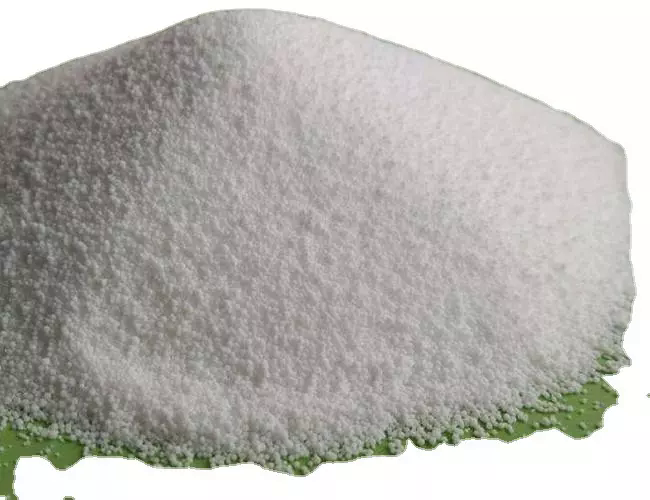 Mupirocin 98%View Details
Mupirocin 98%View Details -
 MUPIROCIN 99%View Details
MUPIROCIN 99%View Details -
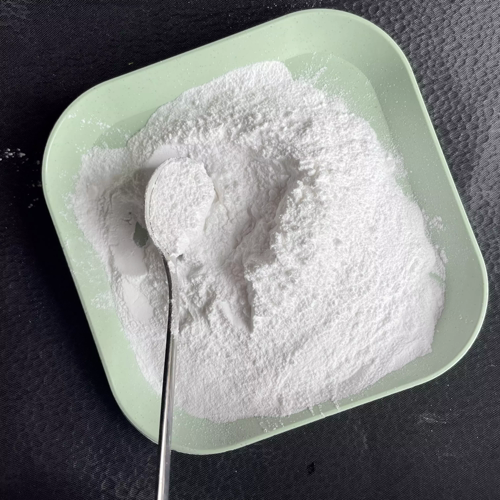 Mupirocin 99%View Details
Mupirocin 99%View Details -
 Mupirocin 99%View Details
Mupirocin 99%View Details -
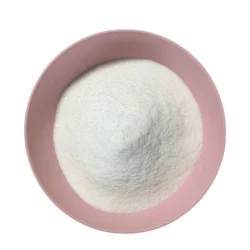 USP Mupirocin Api PowderView Details
USP Mupirocin Api PowderView Details
12650-69-0 -
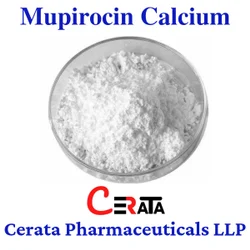 Mupirocin Calcium PowderView Details
Mupirocin Calcium PowderView Details
115074-43-6 -
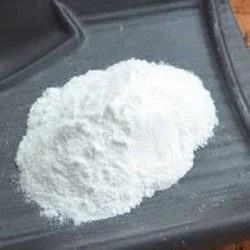 Mupirocin Calcium API Powder, Grade Standard: EPView Details
Mupirocin Calcium API Powder, Grade Standard: EPView Details
115074-43-6 -
 Mupirocin API PowderView Details
Mupirocin API PowderView Details
12650-69-0
